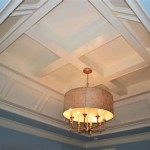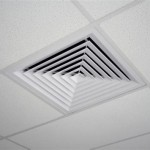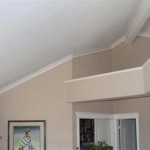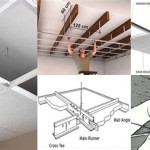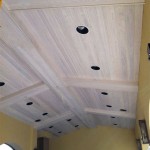Soundproofing Ceiling Tiles: Everything You Need to Know
Noise pollution has become an increasingly common issue in both residential and commercial environments. Whether it's the sound of traffic, construction, or loud neighbors, unwanted noise can significantly disrupt our daily lives, affecting our well-being and productivity.
One effective solution to this problem is the use of soundproofing ceiling tiles. These tiles are designed to absorb and block sound, reducing noise levels and creating a more peaceful and comfortable environment. In this article, we'll delve into the world of soundproofing ceiling tiles, discussing their types, benefits, installation, and more.
## Types of Soundproofing Ceiling TilesThere are various types of soundproofing ceiling tiles available, each with its own advantages and drawbacks. Some of the most common types include:
- Mineral Fiber Tiles: Made from recycled glass and minerals, these tiles are lightweight and economical. They offer good sound absorption and can withstand moisture, making them suitable for areas prone to humidity.
- Fiberglass Tiles: These tiles are constructed from fiberglass and coated with a vinyl film. They are lightweight, durable, and flame-resistant, making them a popular choice for commercial and industrial applications.
- Wood Fiber Tiles: As the name suggests, these tiles are made from wood fibers. They provide excellent sound absorption and have a natural, warm aesthetic. However, they are more expensive and less durable compared to other types.
- Metal Ceiling Tiles: Usually made of aluminum or steel, these tiles are strong, durable, and fire-resistant. They offer limited sound absorption but can be combined with sound-absorbing materials for improved performance.
- Acoustic Foam Tiles: These tiles are made from a lightweight, porous foam material. They are highly effective at absorbing sound, making them ideal for home studios, recording rooms, and other sound-sensitive environments. However, they may be less durable and can be damaged by moisture.
Installing soundproofing ceiling tiles offers numerous benefits, including:
- Noise Reduction: The primary purpose of soundproofing ceiling tiles is to reduce unwanted noise levels. They absorb and block sound waves, creating a quieter and more peaceful environment.
- Improved Communication: In noisy environments, it can be difficult to communicate effectively. Soundproofing ceiling tiles can significantly reduce background noise, allowing for clearer conversations and improved listening comprehension.
- Increased Productivity: Excessive noise can be detrimental to productivity in work and learning environments. Soundproofing ceiling tiles help minimize distractions and create a more conducive atmosphere for concentration and focus.
- Enhanced Comfort: Prolonged exposure to noise can be stressful and lead to headaches, sleep problems, and other health issues. Soundproofing ceiling tiles create a more comfortable and relaxing environment, promoting well-being and reducing stress levels.
- Fire Safety: Some soundproofing ceiling tiles, such as fiberglass and metal tiles, are fire-resistant, providing an added layer of protection against fire damage.
The installation process for soundproofing ceiling tiles can vary slightly depending on the type of tiles and the existing ceiling structure. However, here's a general overview:
- Prepare the Ceiling: Remove any existing ceiling fixtures or tiles. Ensure the ceiling surface is clean, smooth, and dry.
- Install Suspension System: A suspension system, typically consisting of metal grid or clips, is installed to support the soundproofing tiles. Follow the manufacturer's instructions for proper spacing and alignment.
- Place Soundproofing Tiles: Carefully lift and place the soundproofing tiles into the suspension system. Ensure they fit snugly and are securely held in place.
- Trim and Seal: If necessary, trim the tiles to fit around obstacles or edges. Seal any gaps with acoustic sealant to prevent sound leakage.
- Install Fixtures: Reinstall any ceiling fixtures, such as lighting or ventilation systems.
When selecting soundproofing ceiling tiles, there are several factors to consider:
- Noise Reduction Coefficient (NRC): NRC is a measure of how well a material absorbs sound. A higher NRC indicates better sound absorption. Choose tiles with an NRC rating of 0.7 or higher for effective noise reduction.
- Size and Shape: Consider the dimensions of the space you want to soundproof and select tiles that will adequately cover the area. Tiles are available in various sizes and shapes, including squares, rectangles, and clouds.
- Material: Choose tiles made from durable and sound-absorbent materials that meet your specific needs and budget. Consider factors such as moisture resistance, fire safety, and aesthetic appeal.
- Style and Color: Soundproofing ceiling tiles come in a wide range of styles and colors. Select tiles that complement the interior design and overall ambiance of your space.
- Budget: Soundproofing ceiling tiles vary in price. Determine your budget and choose tiles that offer the best value for your money.
Soundproofing ceiling tiles are a valuable tool for reducing noise levels and creating a more tranquil and productive environment. By understanding the different types, benefits, and installation process of these tiles, you can make informed decisions to enhance the acoustic comfort of your home, office, or any other space where noise reduction is desired. With the right soundproofing ceiling tiles, you can enjoy a more peaceful and relaxing atmosphere, allowing you to focus, communicate, and simply enjoy life without the distractions of unwanted noise.

Facts About Acoustical Ceiling Tiles

Why You Should Consider Installing Acoustic Ceiling Tiles Decorative Inc
How To Soundproof A Drop Ceiling Second Skin Audio

What Ceiling Tiles Are Best For Soundproofing And Sound Absorption

How To Soundproof Ceilings Noisestop Systems

Zentia Ceiling Tiles What You Need To Know

Ceiling Soundproofing Ceilings Armstrong Residential

Interior Acoustical Ceilings In Fort Wayne

When To Use Acoustic Ceiling Panels

Acoustical Ceiling Tiles Ceilume
Related Posts

